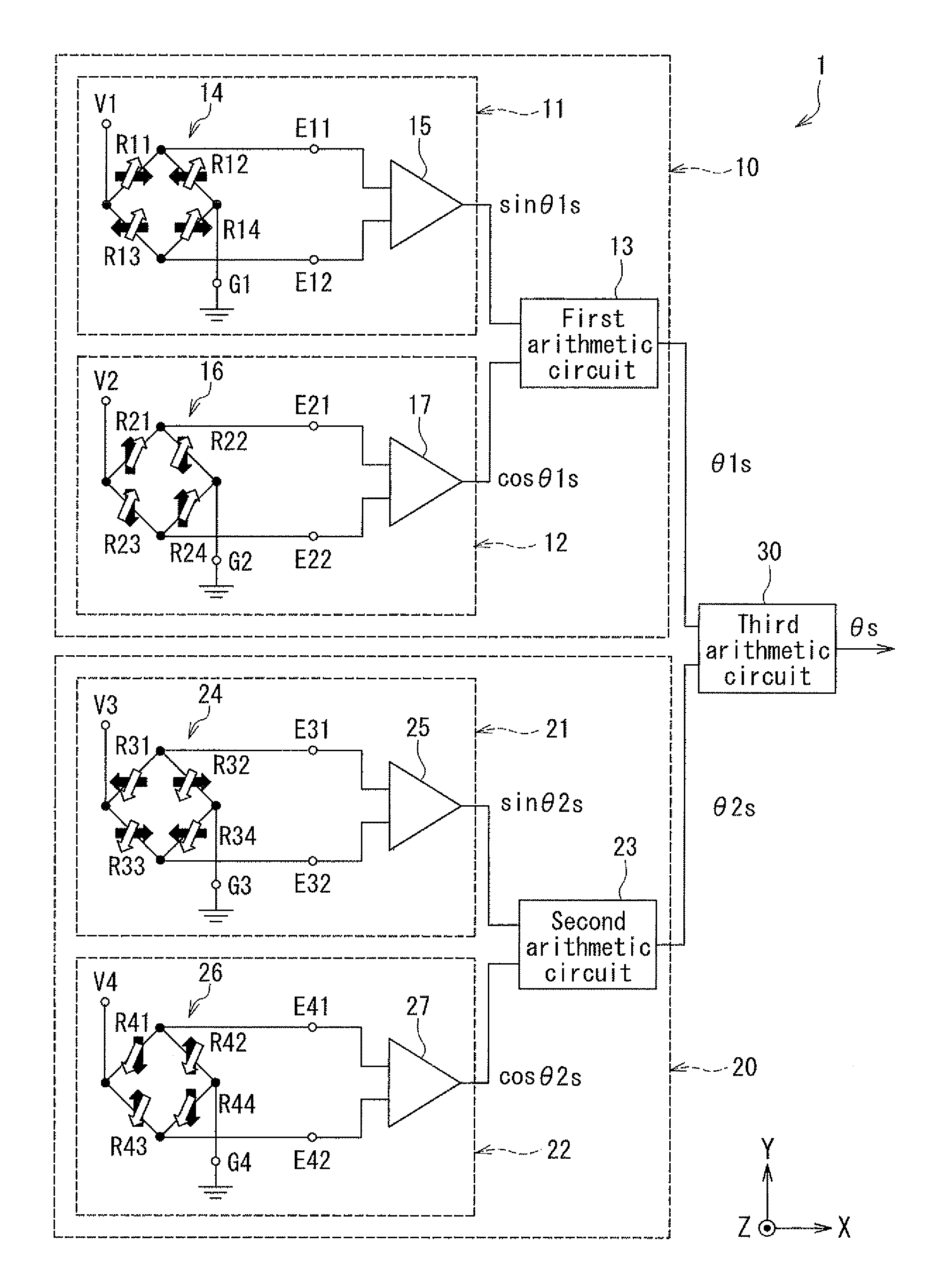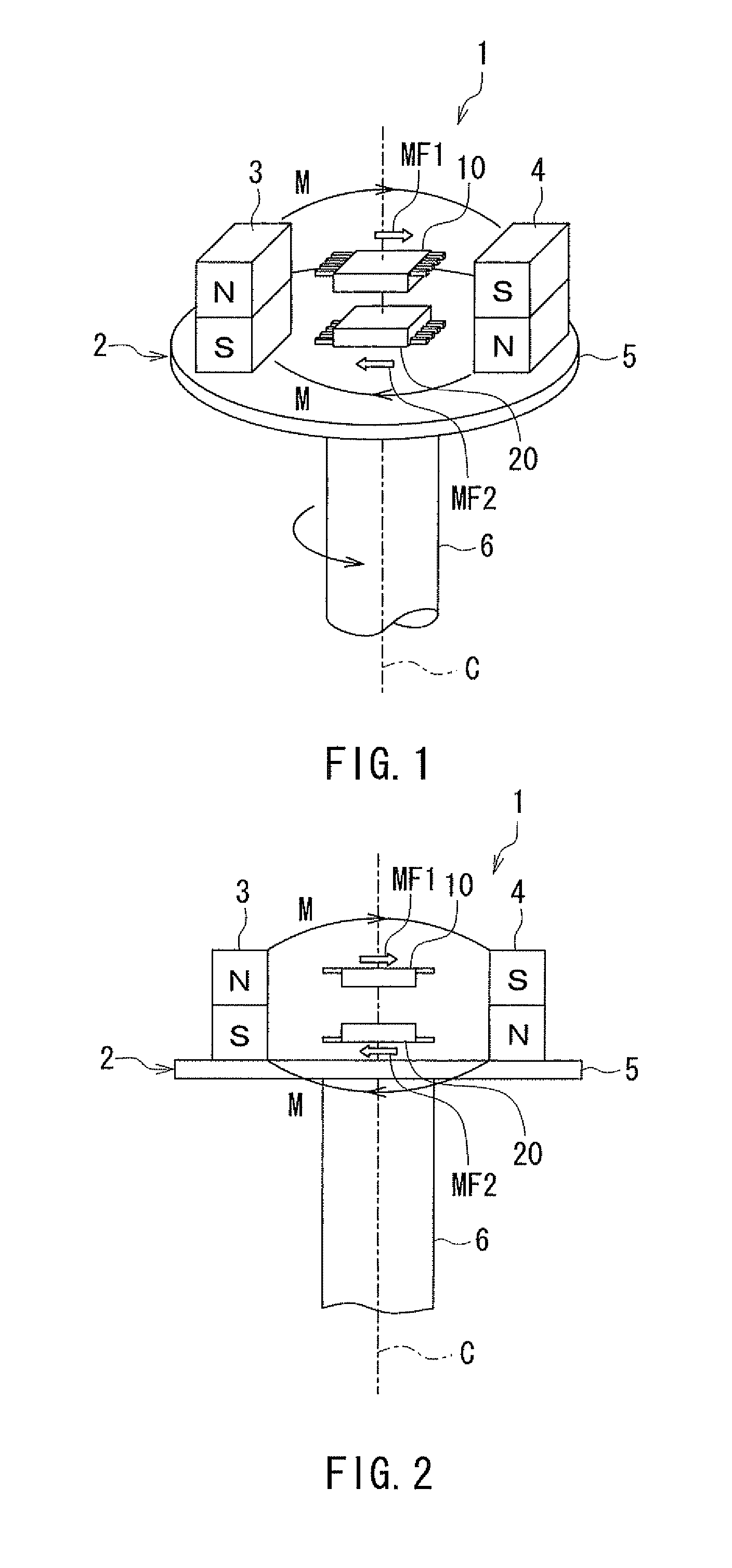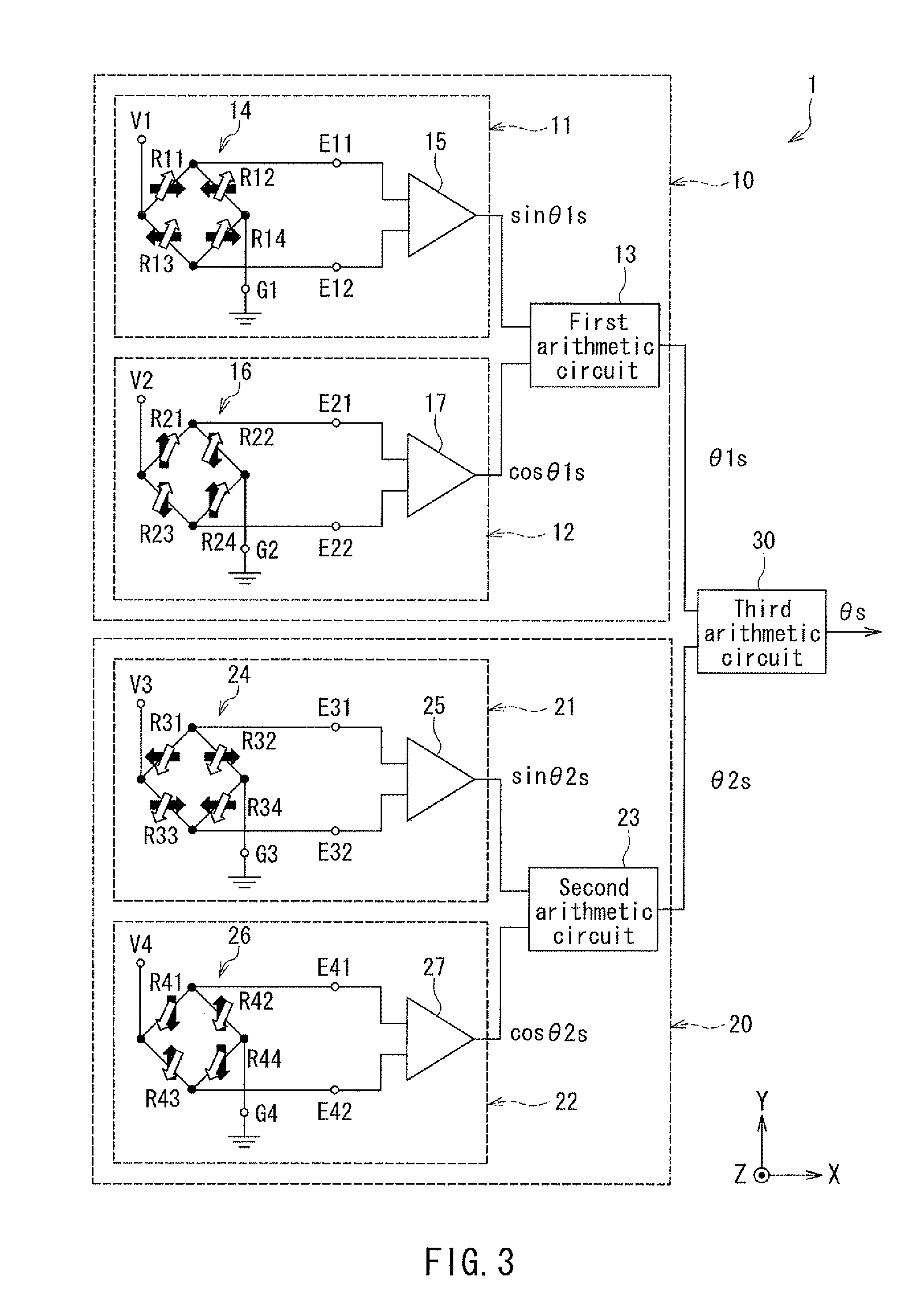Rotating field sensor
a sensor and rotating field technology, applied in the direction of magnetic measurement, instruments, nanomagnetism, etc., can solve the problems of reducing the installation location of magnetic detection elements, and affecting the accuracy of detection.
- Summary
- Abstract
- Description
- Claims
- Application Information
AI Technical Summary
Benefits of technology
Problems solved by technology
Method used
Image
Examples
first embodiment
[0062]Preferred embodiments of the present invention will now be described in detail with reference to the drawings. First, reference is made to FIG. 1, FIG. 2, FIG. 4A and FIG. 4B to describe the general configuration of a rotating field sensor according to a first embodiment of the invention. FIG. 1 is a perspective view showing the general configuration of the rotating field sensor according to the present embodiment. FIG. 2 is a side view showing the general configuration of the rotating field sensor according to the present embodiment. FIG. 4A and FIG. 4B are explanatory diagrams illustrating the definitions of directions and angles in the present embodiment.
[0063]The rotating field sensor 1 according to the present embodiment detects the angle that the direction of a rotating magnetic field in a reference position forms with respect to a reference direction. The rotating magnetic field includes a first partial magnetic field MF1 in a first position and a second partial magneti...
modification examples
[0108]First and second modification examples of the present embodiment will now be described. First, a description will be given of a rotating field sensor 1 of the first modification example of the embodiment with reference to FIG. 7. FIG. 7 is a side view showing the general configuration of the rotating field sensor 1 of the first modification example. In the first modification example, the pair of magnets 3 and 4 are tilted with respect to the center of rotation C so that the distance between the magnets 3 and 4 increases with increasing distance from the top surface of the disc part 5. The N and S poles of the magnet 3 are arranged obliquely to the center of rotation C, in the order of the S pole and the N pole in the direction away from the top surface of the disc part 5. The N and S poles of the magnet 4 are arranged obliquely to the center of rotation C, in the order of the N pole and the S pole in the direction away from the top surface of the disc part 5.
[0109]In FIG. 7, t...
second embodiment
[0112]A rotating field sensor according to a second embodiment of the invention will now be described with reference to FIG. 9 and FIG. 10. FIG. 9 is a perspective view showing the general configuration of the rotating field sensor according to the present embodiment. FIG. 10 is a side view showing the general configuration of the rotating field sensor according to the present embodiment. As shown in FIG. 9 and FIG. 10, the rotating field sensor 61 according to the present embodiment has a field generation unit 62 instead of the field generation unit 2 of the first embodiment.
[0113]The field generation unit 62 has a ring-shaped magnet 63. The magnet 63 is attached to a rotating shaft 66 which is the object whose rotational position is to be detected. In FIG. 9 and FIG. 10, the dot-and-dash line designated by symbol C shows the center of rotation including the center axis of the rotating shaft 66. The magnet 63 is fixed to the rotating shaft 66 by not-shown fixing means so as to be s...
PUM
 Login to View More
Login to View More Abstract
Description
Claims
Application Information
 Login to View More
Login to View More - R&D
- Intellectual Property
- Life Sciences
- Materials
- Tech Scout
- Unparalleled Data Quality
- Higher Quality Content
- 60% Fewer Hallucinations
Browse by: Latest US Patents, China's latest patents, Technical Efficacy Thesaurus, Application Domain, Technology Topic, Popular Technical Reports.
© 2025 PatSnap. All rights reserved.Legal|Privacy policy|Modern Slavery Act Transparency Statement|Sitemap|About US| Contact US: help@patsnap.com



